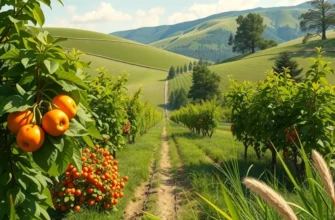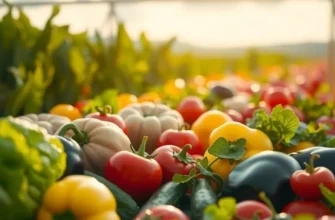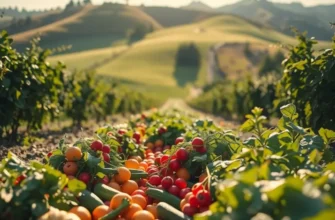Unlock the secret to perfectly caramelized vegetables that elevate any meal. Whether you’re a novice or a seasoned home cook, mastering the art of caramelization can enhance flavors and textures in your dishes. By following a few key tips and techniques, you can achieve that golden-brown, sweet finish that makes vegetables shine. Let’s dive into the essentials of caramelizing vegetables evenly.
Selecting and Preparing Your Vegetables

Choosing the right vegetables for caramelization can dramatically improve your culinary results. Vegetables high in natural sugars and with low water content are ideal candidates. Onions, carrots, sweet potatoes, and bell peppers are prime examples, offering both sweetness and color when caramelized. Before embarking on this culinary journey, it’s crucial to understand how different vegetables react to heat and how to prepare them for optimal caramelization.
One factor influencing caramelization is moisture content. Vegetables like zucchini or mushrooms have high water content, which hinders the caramelization process, leading to steaming rather than browning. If such vegetables are desired in your dish, consider pairing them with drier vegetables and ensure proper cooking techniques to achieve the best results.
The size and cut of the vegetables also play a pivotal role. Uniformly sliced or chopped vegetables ensure even cooking. Larger pieces take longer to caramelize, which can lead to uneven texture or partially cooked centers. Therefore, aim for bite-sized pieces that cook uniformly, offering consistent caramelization.
Peeling some vegetables, like carrots or sweet potatoes, helps them caramelize more evenly. However, many vegetables have nutrient-rich skins that also develop flavor when caramelized. Consider whether the skins will contribute to or detract from your desired result.
Preparation Techniques for Optimal Results:
-
Dry the Vegetables: Excess moisture can sabotage your caramelization process. Thoroughly dry your vegetables with a clean kitchen towel or paper towel after washing.
-
Preheat Surfaces: Ensure your pan or grill is adequately preheated. Use medium-high heat to allow the sugars in the vegetables to caramelize without burning.
-
Use Sufficient Fat: A healthy drizzle of oil not only facilitates even cooking but also enhances the caramelization process. Ensure each piece is mildly coated to prevent sticking and promote browning.
-
Space for Caramelization: Overcrowding your pan leads to steaming. Maintain space between vegetables to allow the heat to properly circulate, ensuring each piece gets its caramelized crust.
The art of selecting and preparing vegetables for caramelization extends beyond just knowing what to pick. It’s about understanding how to treat each vegetable type to harness its potential. Should you wish to explore minimal prep ideas while maximizing flavor, check this article. By respecting each vegetable’s unique properties and preparing them with intention, every meal becomes an exploration of flavors and textures.
The Technique of Caramelization

Caramelizing vegetables is a rewarding process that turns everyday produce into a sweet, delicious treat. The magic happens through two main ingredients: heat and patience. Here’s how you can make sure your vegetables achieve perfect caramelization every time.
Start by selecting the right cooking surface. A sturdy pan with good heat distribution is crucial. Cast iron or stainless steel pans work exceptionally well for even heat distribution. Avoid non-stick surfaces for caramelization, as they can inhibit the browning needed for that sweet flavor.
Next, ensure you have the right oil. Opt for oils with a high smoke point such as avocado or grapeseed oil, which can handle the sustained heat required without burning. A light coating is all you need; too much oil can steam the vegetables instead of caramelizing them.
Preheating your pan is an essential step that should not be overlooked. Start by heating your pan over medium-high heat. Test the temperature by adding a small amount of oil. It’s ready when the oil shimmers, indicating it’s hot enough to sear the vegetables and begin the caramelization.
Once the pan is ready, add your selected vegetables, ensuring they are in a single layer. Crowding the pan will lead to steaming rather than caramelizing. Each piece should have good contact with the bottom of the pan. Resist the urge to stir frequently. Allowing vegetables to rest untouched helps develop that coveted golden-brown crust.
The process of turning is more art than science. Let sight and smell guide you; the bottoms of the vegetables will start to brown and emit a rich aroma. Use a spatula to gently flip or turn them over for even cooking. If you notice uneven coloring, adjust the heat or shift the pieces around as needed.
Patience is your best ally in this process. Achieving that perfect caramelization might take up to 20 minutes depending on the vegetable and its moisture content. Moisture management is key, as excess water can stall the caramelization. If necessary, use a paper towel to blot moisture from particularly wet vegetables like mushrooms.
For inspiration on using minimal ingredients while maximizing flavor, consider exploring practical techniques like minimal prep dinner ideas. These methods can complement the natural sweetness of caramelized vegetables.
Finally, consider the role of seasoning. Salt can be added either during or after cooking to help draw out moisture and accentuate sweetness. Adding a splash of balsamic vinegar or a sprinkle of brown sugar towards the end of cooking can amplify the caramelization and introduce a delightful tangy note.
Mastering the art of caramelization requires a balance of the right tools, techniques, and patience. As you refine this skill, you’ll find new depth in the flavors of your vegetables and elevate your cooking to new, sweet heights.
Final words
Caramelizing vegetables is a straightforward yet transformative cooking technique that enriches your culinary creations. By choosing the right vegetables and mastering the cooking process, you can achieve perfectly caramelized results that tantalize taste buds and enhance any dish. Remember, patience and the right techniques are key to this process. With practice, you will become more comfortable and skillful in the kitchen, turning every meal into a flavorful celebration. Enjoy experimenting with different vegetables and flavors, and impress your friends and family with your enhanced culinary skills!







